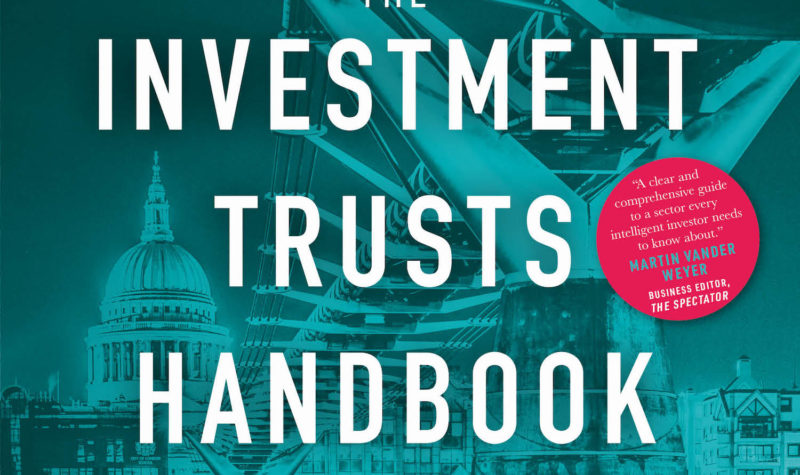The Investment Trusts Handbook 2022: Investing essentials, expert insights and powerful trends and data

Investing in individual shares can be tempting but it can also be a risky business.
While in theory it offers the potential for unlimited returns, the ultimate risk is that you could lose 100% of your investment in a worst-case scenario. And even if that doesn’t happen, there are other challenges for investors, including share-price volatility, business risk, competition risk and, especially with smaller companies, the ability to sell your shares on the market at a fair price. So, some investors might want to take a look at investment trusts instead.
For those not familiar with this asset class, an investment trust is a type of fund where many investors pool their money together. The combined funds are then invested and managed, typically by a professional fund manager. This type of structure has many advantages for investors, including the ability to spread risk over a wide range of assets, economies of scale, low costs and the skills of the fund manager. Depending on their constitution, trusts can invest in practically anything, such as traditional shares and bonds or in more specialist areas like renewable energy and music royalties.
Unlike so-called open-ended funds, investment trusts are closed-ended. This means that a fixed number of shares are issued to investors, with the shares then listed on a stock exchange. As they trade on an exchange, the share price of an investment trust can rise and fall just like any other share. This means that the market cap of the trust can differ from the value of its underlying assets, with trusts typically trading at a modest discount to net asset value (NAV). This offers good opportunities when you want to buy but also a disadvantage if you have to sell. Some more popular and better performing funds, however, might trade at a small premium.
What’s more, most trusts can be held in an ISA or SIPP to take advantage of tax benefits, with trusts themselves being exempt from UK corporation tax made on gains. Many pay a decent dividend every year, providing income along with the potential for capital returns. The Association of Investment Companies estimates that as at 30 November 2021 there were 393 such investment trusts in the UK, holding £278bn of assets – that’s about the same as the entire GDP of Malaysia.
For those investors interested in this often overlooked and underresearched area of the market, The Investment Trusts Handbook 2022 is for you. Thisis the latest edition of a publication which aims to provide data on the trusts sector as it is today, combined with a range of features and analysis which highlight the opportunities available.
Trusty advisers
As in previous years, the handbook is authored by Jonathan Davis, a prolific stock-market commentator, who has written several books including Money Makers, Investing with Anthony Bolton and Templeton’s Way with Money. Davis contributes the introduction to the book, as well as several other sections. A number of experienced industry professionals also provide their own expert guidance.
It’s worth noting that in the first edition of the handbook Davis created a model investment portfolio, beginning in January 2017 with 10 investment trusts, with £10,000 invested in each one. This was designed as a medium-risk portfolio with long-term investing in mind. In the latest edition, the value of the portfolio is said to have increased to an impressive £187,000.
Following Davis’ introduction, the first section focuses on reviewing the markets in late 2020 and 2021, including a month-by-month breakdown of events. This is followed by short, essay-style contributions from several industry experts. Fund manager and journalist Max King contributes two articles, the first providing his view on equity-trust performance in 2021. The second reviews how the alternative-investment sector performed during the year. A few articles then look at the importance of trust managers.
The next section, ‘Professional Perspectives’, contains interviews with and articles by trust managers and other industry players, such as Simon Elliott, head of investment trust research at Winterflood Securities and Iain McCombie, co-manager of the Baillie Gifford UK Growth Trust. In the ‘Investor Forum’, some of the most experienced investment-trust investors respond to questions on topical subjects such as how well trusts recovered from the pandemic; whether current discounts to NAV are expected to move; and whether we are entering a new era of higher inflation. One of my favourites is the interview with Simon Gergel, manager of the renowned Merchants Trust, who discusses the challenges facing equity-income fund managers in a period when value has been out of style.
The final part of the handbook focuses on analysing investment trusts. Here, a number of key concepts are explained by professional managers, sectors are examined and performance evaluated, so that readers can determine for themselves how to go about finding the best investment opportunities. Davis discusses what he considers to be the best data sources in the industry and at the end of the book, a range of data and performance tables provide useful reference information on the investment-trust sector.
Once again, Jonathan Davis has put together what is now considered to be the definitive guide on UK investment trusts. For those new to the industry, the book provides information on all the key concepts, to help readers understand how investment trusts work, along with a range of ideas and analysis on how to make the best of the opportunities. Those with more knowledge of trusts will benefit from the insights of finance professionals who have collective industry experience amounting to many hundreds of years.
Comments (0)